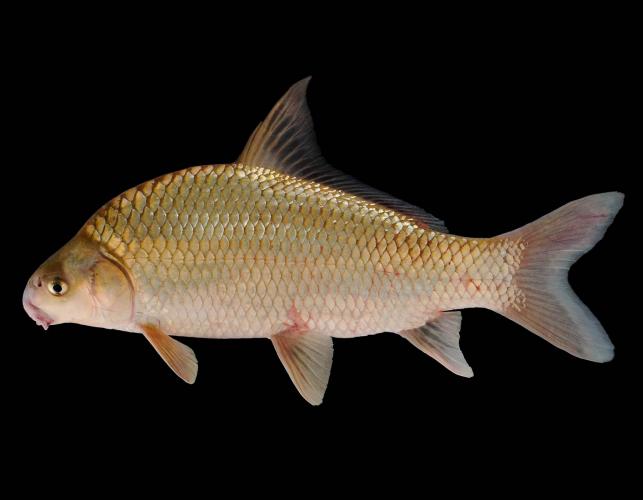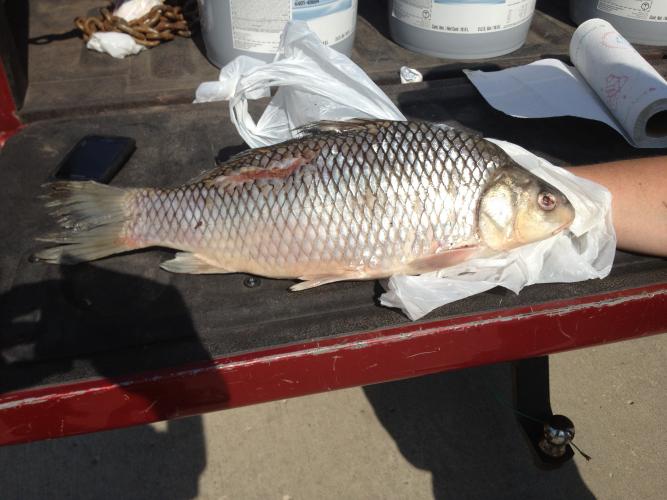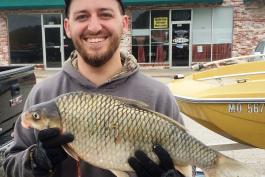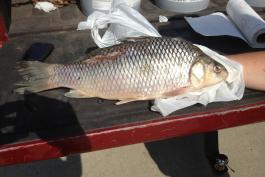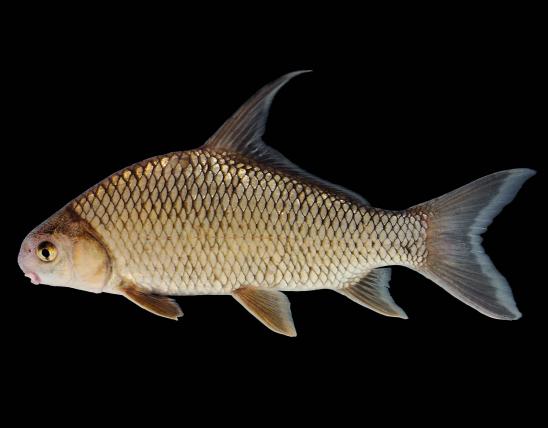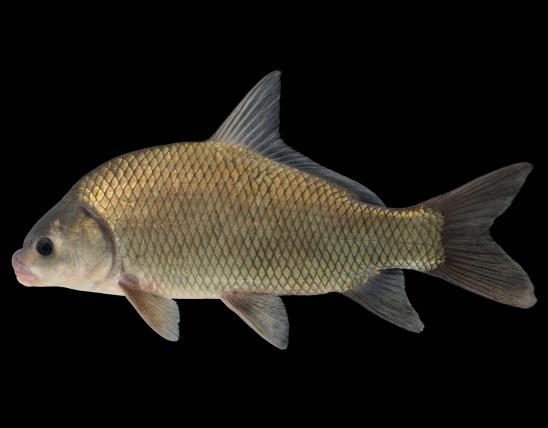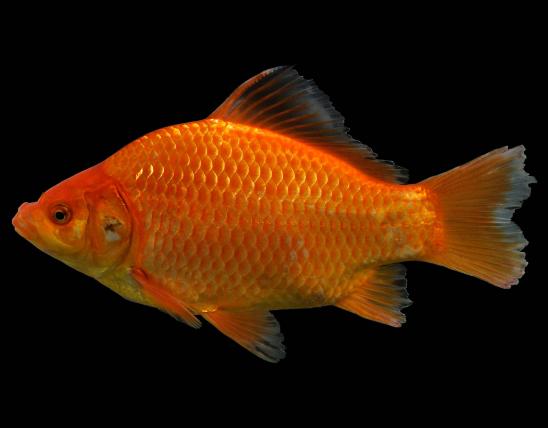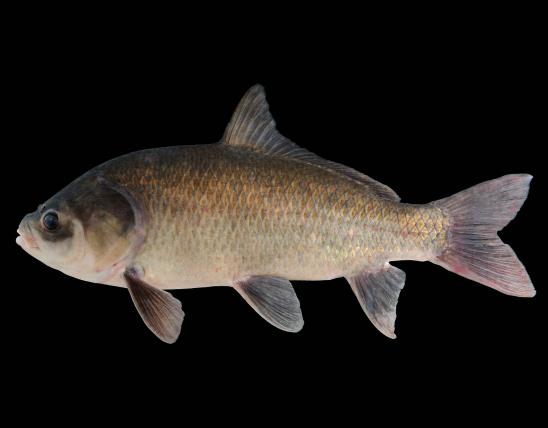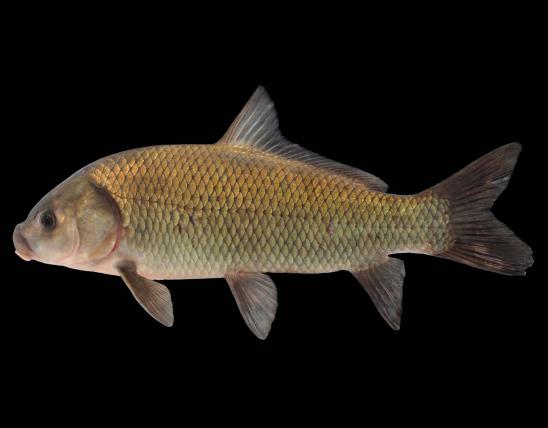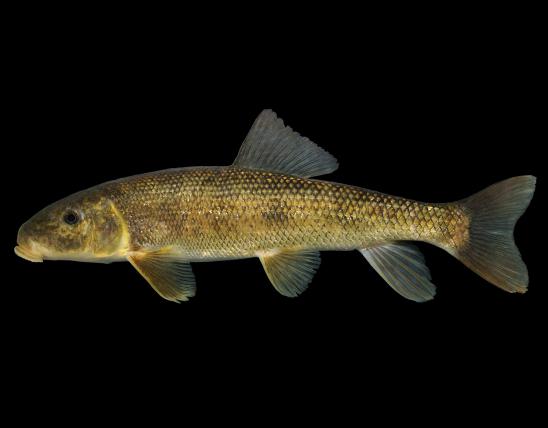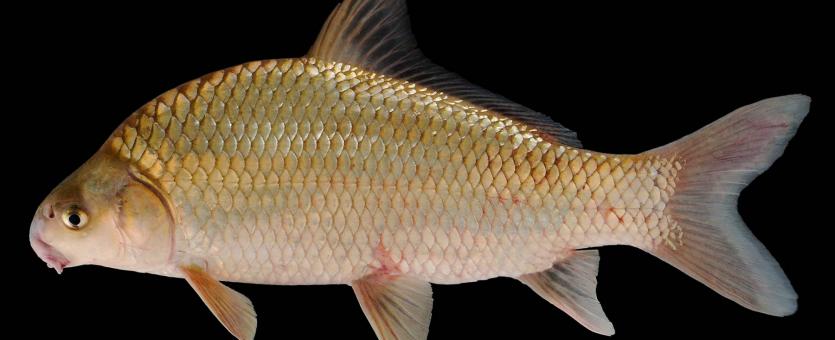
The river carpsucker has a silvery, deep, rather thick body, a long, sickle-shaped dorsal fin, and whitish lower fins. The center of the lower lip has a nipple-like projection.
Similar species:
- The highfin carpsucker is distinguished by the length of the first ray of its dorsal fin, which reaches to or beyond the back of the dorsal fin. The highfin carpsucker is also a more slender, but deeper-bodied fish.
- Although some Missourians call the river carpsucker "white carp," "silver carp," and "quillback," these names are inaccurate. Another Missouri species (Carpiodes cyprinus) is properly called the quillback, and "silver carp" is properly used for Hypophthalmichthys molitrix, an invasive carp introduced from China.
Total length: 12 to 15 inches; maximum about 25 inches.
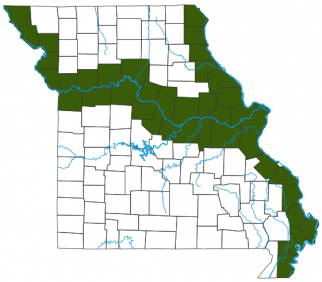
The most widely distributed carpsucker in Missouri. The main center of occurrence is the Missouri and Mississippi rivers and their major prairie tributaries in northern and western Missouri.
Habitat and Conservation
By far the most abundant and widely distributed carpsucker in Missouri. Preferred habitats are quiet, silt-bottomed pools, backwaters, and oxbows of large streams having moderate or low gradients. Also occurs in the deeper pools of small prairie creeks and often thrives in impoundments. Seems to prefer waters that are mostly turbid. Where waters are more clear, this species is replaced by the related quillback and highfin carpsucker.
Food
Omnivorous, feeding on algae, detritus, plants, and invertebrates.
Life Cycle
Individuals can live for 10 years.
Human Connections
Considered a sport fish, also harvested commercially. Most carpsuckers are rarely taken on hook and line and are little valued as food. However, this, and a few other carpsucker species, are marketed by commercial fishers along the Missouri and Mississippi rivers.
Ecosystem Connections
The young are probably of some importance as forage, but at an early age this species becomes too large to be eaten by most game fish. In some reservoirs, this species is thought to compete for food or space with more "desirable" fishes.
